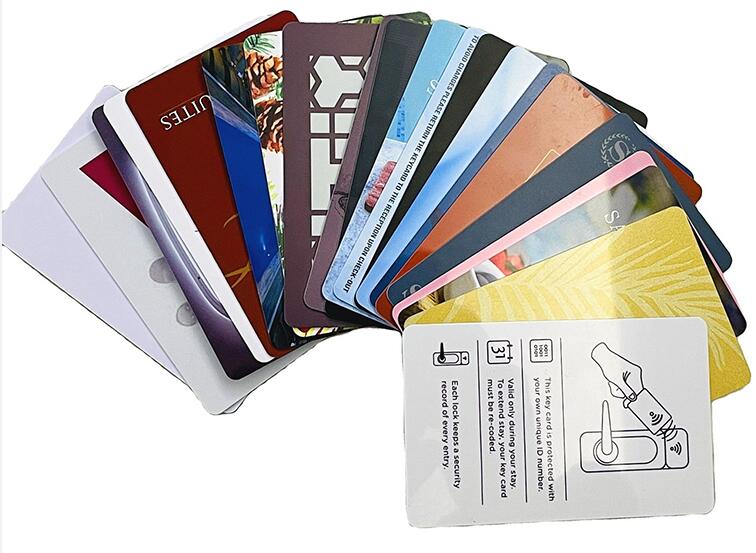The Rise of Smart Cards: Revolutionizing Digital Security and Convenience
2025-03-26
In today’s fast-paced, technology-driven world, smart cards have become an integral part of daily life. From financial transactions to access control, transportation, and even healthcare, these versatile cards are transforming the way we interact with the world around us. But what exactly are smart cards, and how are they reshaping industries? In this blog, we’ll explore the concept of smart cards, their various uses, and the benefits they offer in terms of security and convenience.
What is a Smart Card?
A smart card is a physical card embedded with a microprocessor chip or a memory chip. This chip is capable of storing and processing data, allowing the card to interact with various devices and systems. Smart cards are widely used in situations where security, authentication, or access control is essential. They differ from traditional magnetic stripe cards, as they offer more sophisticated capabilities, including encryption and secure data transmission.
There are two primary types of smart cards:
1. Contact Smart Cards – These require physical contact with a card reader to access the chip’s data.
2. Contactless Smart Cards – These use radio frequency identification (RFID) technology and can communicate with a reader without being physically inserted, making them quicker and more convenient to use.
Key Applications of Smart Cards
1. Payment Solutions
One of the most common applications of smart cards is in payment systems. Credit and debit cards equipped with smart chips provide an added layer of security for financial transactions. These cards utilize chip-and-PIN technology or contactless payment methods to protect against fraud and unauthorized access. By encrypting transaction data, smart cards make it more difficult for hackers to gain access to sensitive financial information, reducing the risk of card cloning or theft.
Smart cards are also used in mobile payment solutions like Apple Pay, Google Wallet, and other similar services, where users can store their card information securely on their smartphones and make payments with a simple tap or swipe.
2. Access Control
Smart cards have revolutionized the way businesses and organizations manage access to secure areas. Traditionally, physical keys or magnetic swipe cards were used to grant entry to buildings, rooms, or systems. However, these methods have limitations in terms of security and convenience. Smart cards offer a more advanced solution by integrating biometric data or encrypted codes, ensuring that only authorized personnel can gain access.
Many companies now use smart cards for employee identification and access to restricted areas, which helps streamline security processes. Whether it’s an office building, hotel, or government facility, smart cards are providing a higher level of control over who enters and exits secure zones.
3. Transportation and Public Transit
Smart cards are commonly used in public transportation systems around the world. Instead of carrying paper tickets or cash, passengers can use smart cards to quickly and efficiently pay for their rides. These cards can be topped up with credit and used for multiple journeys, reducing the need for physical money or ticket vending machines.
Cities like London, New York, and Tokyo have already integrated smart card systems into their public transit networks, making it easier for commuters to travel with ease. Moreover, the contactless nature of these cards reduces queues and wait times, making the whole experience more efficient for both passengers and transit operators.
4. Healthcare
The healthcare industry is increasingly adopting smart card technology to manage patient records and ensure secure access to medical services. Smart cards can store medical data such as treatment history, allergies, and prescriptions, making it easier for healthcare providers to access a patient’s medical history when needed. This not only improves the quality of care but also ensures patient privacy and data security.
Smart cards are also used in health insurance, where they can be linked to a patient’s insurance details, streamlining the claims and billing process. In emergency situations, a smart card can provide instant access to vital information, which could be lifesaving.
5. Identification and Authentication
Smart cards are an ideal solution for identity verification in both physical and digital environments. Many countries have adopted smart cards for national identification purposes, where they store personal information and biometric data. This provides a more secure and efficient method of verifying a person’s identity compared to traditional paper-based methods.
In digital security, smart cards are often used for two-factor authentication (2FA), providing an additional layer of protection for online accounts. Instead of relying solely on passwords, users can insert a smart card into a reader or use it in combination with a PIN to access secure services like banking, email, and government portals.
Benefits of Smart Cards
1. Enhanced Security
One of the most significant advantages of smart cards is the high level of security they offer. With advanced encryption techniques, smart cards protect sensitive data from unauthorized access. Whether used for payment, access control, or identification, these cards provide an added layer of protection against fraud and identity theft.
For example, the use of PIN codes, biometrics, and secure data storage makes it nearly impossible for hackers to duplicate or compromise smart card information.
2. Convenience and Efficiency
Smart cards are incredibly convenient, allowing for quick and easy transactions or access without the need for physical cash or traditional keys. With contactless technology, users can simply tap their card or device to complete a payment or gain entry to secure areas. This not only speeds up processes but also reduces the need to carry multiple items, such as cash, tickets, or keys.
3. Cost-Effectiveness
In the long run, smart cards can be more cost-effective than traditional systems. For example, in the context of transportation, the use of smart cards can reduce the cost of printing paper tickets, maintaining vending machines, and handling cash. Additionally, smart cards can help businesses reduce fraud, which can lead to cost savings in areas like financial transactions and access control.
4. Multi-Purpose Functionality
Another key advantage of smart cards is their versatility. A single smart card can be used for multiple purposes, such as making payments, accessing secure areas, managing transportation, and verifying identity. This simplifies the user experience by reducing the number of physical cards or devices needed to perform different tasks.
Future of Smart Cards
As technology continues to evolve, smart cards are likely to become even more advanced. Innovations in biometric authentication, mobile integration, and chip technology will likely result in even more secure, user-friendly, and multifunctional smart cards. Additionally, with the growth of the Internet of Things (IoT) and the expansion of digital services, the demand for smart cards will likely increase as they become an integral part of daily life.
Conclusion
Smart cards are more than just a convenient tool; they represent a significant leap forward in the world of digital security and convenience. From making secure payments to controlling access to buildings and simplifying transportation systems, smart cards have proven their versatility and value across various industries. As technology advances, we can expect to see even greater innovations and widespread adoption of smart cards, revolutionizing the way we live and work.



